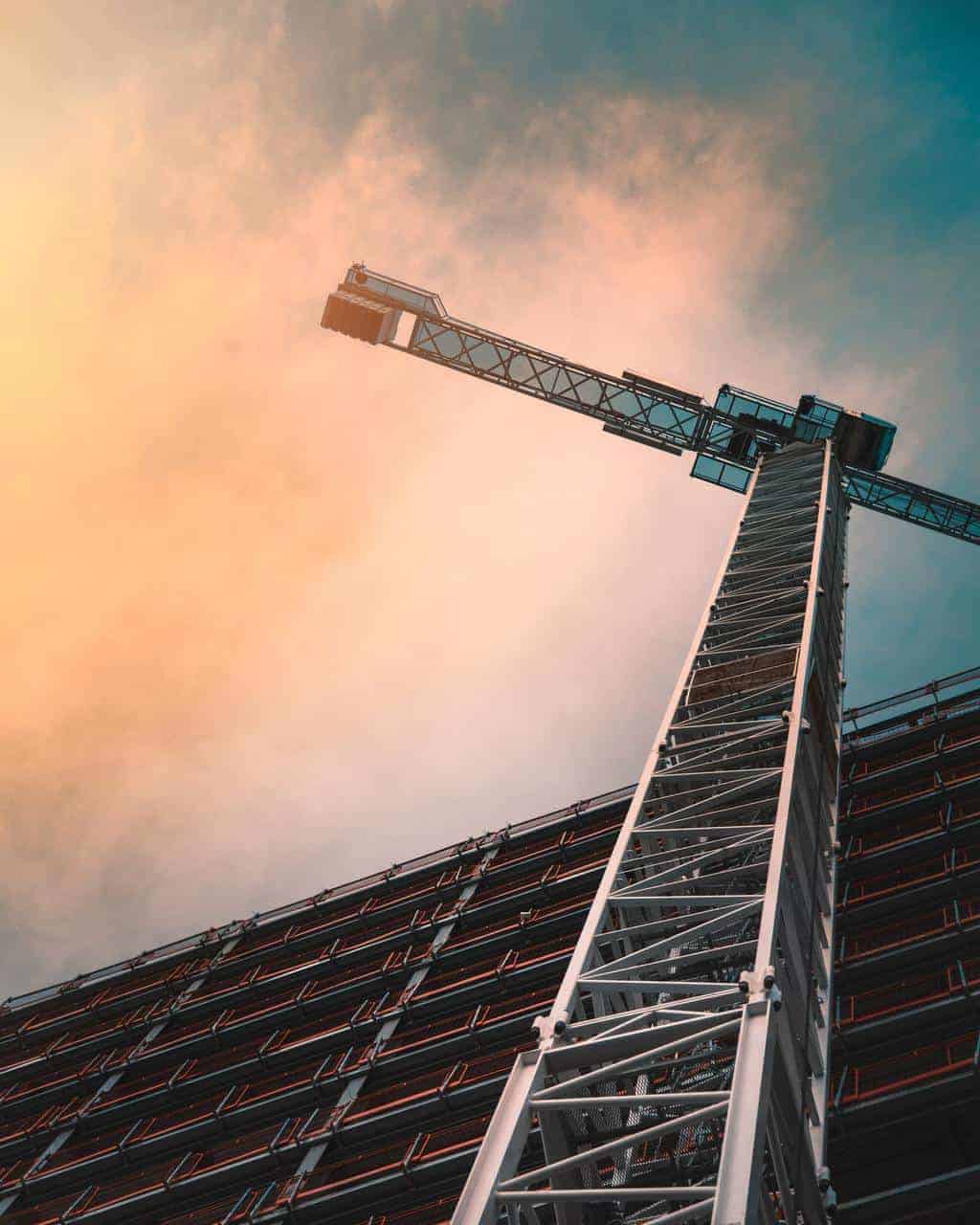Needing a commercial construction loan usually is a good sign for a business. It is ready to expand its facility, ready to acquire land for an entirely new facility, ready to add new space for a specialized kind. But commercial construction also represents one of the single largest investments that a business makes. Often, it is an outlay beyond the financial resources of the business and its owners.
What Is A Commercial Construction Loan?
This may become the occasion to seek a commercial construction loan. Call it a renovation loan, a new construction loan, a land purchase loan, or an expansion loan: If it is for a project that involves a commercial facility, it is a commercial construction loan. In some ways, such a loan is quite different from other business loans (such as a commercial mortgage to purchase an existing facility as one would buy a home). Generally, lenders view commercial construction loans as carrying a high risk. That explains certain distinctive features of such loans and the requirements the borrower must meet to get approved.
Types of Construction Loans
What are different types of commercial construction loans available? Both government and private lenders, including banks, credit unions, and other lenders, make commercial construction loans.
The Small Business Administration (SBA) is one common source of commercial construction loans because they do not require high down payments, do have competitive interest rates, and required credit scores are in the high 600s:
- The SBA CDC/504 loan may be up to $5 million over 10 to 20 years with interest based on U.S. Treasury rates. The down payment is between 10% and 30%, with collateral usually required. Major owners of the business must personally guarantee the loan. The funding will come from an SBA-certified development company for 40% of the project’s costs up to $5 million. (This is called the loan-to-costs ratio.) Thus, another lender must be found for 50 percent of the costs, and the borrower put up at least 10%, sometimes 20%.
- The SBA 7a) loan is available for construction of commercial real estate or purchase of it. Again, the cap on lending is $55 million, but with repayment up to 25 years. Interest for this loan is the prime rate plus 2.75% (higher for loans smaller than $50,000 or terms shorter than seven years). Down payment here is between 10% and 20%, and the required credit score of the borrower is in the high 600s.
- Banks make traditional commercial construction loans to business owners. Banks will have different interest rates, repayment terms, and down payment requirements. But almost always, a down payment of at least 10% is demanded, repayment over 25 years is standard, and borrowers can choose fixed or variable rates.
- Private investors or companies may make what are called “hard money loans,” which must be secured by real estate and are short-term funding options. Interest rates and fees on these loans are higher than those charged by other lenders, but often upfront costs are less, and the funding may be obtained faster.
How Commercial Construction Loans Work
Unlike most other types of loans, commercial construction loans are not paid to the borrower upfront in one lump sum. Instead, the loan is drawn upon as certain benchmarks of the project are completed. These benchmarks are laid out in advance, as a draw schedule, while the loan is being considered. As a result, the plans for payments differ according to the project and the lender. Examples of some typical benchmarks in the draw schedule:
- Clear and develop the land.
- Pour the foundation.
- Frame the building.
- Purchase required equipment.
The loan is drawn in amounts agreed on upfront for each step as it is completed. Almost certainly, the lender will require a professional inspection before a given draw-down of the loan is approved. As explained below, interest payments on the loan reflect this structuring of withdrawals.
Interest Rates
The borrower pays interest only on that portion of the loan that has been drawn. Interest will vary from lender to lender and according to the borrower’s credit score, the amount of the down payment, nature and extent of the collateral, the perceived risk of the project itself, the profitability of the business, and the debt burden of the business. Each of these is discussed later.
Available rates range from about 4% to 12%.
The Down Payment
The down payment required of the borrower reduces the risk to the lender and so may lower the interest rate. In most cases, the down payment is at least 10 percent but can be 20% or 30% of the total project cost according to the perceived risk factors. While loans of 100 percent of the project costs are not unknown, they certainly are the exception.
Fees
As with most financial transactions, there are costs to making commercial construction loans. Some of these costs are paid during the origination of the loan as fees:
- Guarantee Fees are paid to the issuer of mortgage-backed security by the holder of the security and go toward the issuer’s administration costs and expenses related to the security. For example, SBA’s guarantee fees range from 2% to 3.5% of the amount borrowed.
- Processing Fees are to pay the lender for expenses of processing the loan.
- Documentation Fees are for specific costs to the lender of drawing up the loan documents. They vary according to the lender by typically may be between $50 and $100.
- Project review Fees pay specifically for the lender’s review of the construction plans during consideration of the loan application.
- Fund control Fees arise if the lender requires a third party to monitor expenditures on the project and get the best value for the money spent.
Commercial Construction Loan Requirements
The borrower seeking a commercial construction loan should expect to meet requirements 1) for the proposed project and 2) requirements for documentation of his personal creditworthiness and business.
Personal/ Business Credit and Credit history
The lender will want to examine the individual borrower’s credit history and score and the business’s credit history and debt situation. Obviously, not all construction projects will be accepted by a lender. Therefore, examined first will be the borrower’s personal credit score. Recall that commercial construction loans are viewed as “high risk” and lender wants to offset that with low-risk borrowers—and that means high credit scores. The standards for deciding creditworthiness will vary with the lender, but, in general, the borrower should have a credit score in the high 600s to qualify for a loan such as SBA CDC/504.
The business’s credit score also will be scrutinized.
The debt-to-income ratio is the relationship between the business’s income and its debt month by month. A DTI of 40% or less usually will suffice, but some lenders have stricter guidelines. The lower the business’s DTI, the better the chances of loan approval. Here is the formula: Total Monthly Debt Payments / Gross Monthly Income = DTI
Another metric the lender will examine is a variation on DTI to get a longer-term view of the business’s debt service coverage ratio (DSCR). In other words, how much income does the business generates annually as a percentage of its debt servicing costs? Here is the formula: Net Operating Income / Current Annual Debt Obligations = DSCR. You want the DSCR number to be higher, indicating the business has enough income to cover existing debts and the debt that will be taken on with the construction loan. Usually, lenders want to see a DSCR higher than 1.25, but this differs with the lender like all requirements.
Industry Experience and Current Business Profitability
More broadly, a lender may inquire into your experience in the industry and want to see specific up-to-date financial numbers of the business.
A Qualified Builder
Before applying for a construction loan, you should identify a qualified builder as the general contractor for the proposed project. That usually means membership in the reputable association of general contractors in your region and a verifiable record of projects completed.
A Sizeable Down Payment
As mentioned, lenders with infrequent exceptions will require a down payment of at least 10%, but in some cases, as much as 30% or more, of total construction costs. If the down payment is larger and, therefore, the risk is lower, the lender may charge a lower interest rate. Before applying for the loan, the borrower should have secured the down payment from the business’s resources or the borrower’s personal resources such as credit cards or a home equity line of credit. But keep in mind that those can increase business or personal debt that the lender will examine.
Appraisal
The market value of any major purchase anticipated by the project—such as land to be purchased or a building to be purchased for renovation—should be assessed by a professional appraiser. It will figure into the bank’s consideration of the project’s risk and the appropriateness of the size of the loan requested.
Detailed Description of the Construction Plan
By the nature of the commercial construction loan, a detailed construction plan will be required. That means blueprints, specifications, and floor plans, for example. In addition, suppliers and labor costs might be relevant. Most obviously, the phases of the project (and the benchmarks of construction progress) must be specified. The builder you have identified for the project probably will be involved with the plan, at least in the final stages of preparing the loan application. The benchmarks on the road to completion of the project should be specific and unambiguous to reduce any future disagreement on when the project should be inspected. If approved, the next portion of the loan will be released.
Income Tax Returns and Current Profit/Loss Statement
Finally, the lender will want to ensure that the borrower’s personal taxes and those of the business are in order and payments are current. A current profit and loss statement also should be ready to submit to demonstrate that the business is healthy as it enters upon its major investment in new construction.
Alternatives to Commercial Construction Loans
A problem faced by owners and builders in commercial construction is cash flow. To take one common example, the project may be awaiting the next payment on the commercial construction loan but want to continue construction without delay. In fact, lack of access to funds can prevent contractors from even taking on some jobs or force them to take them on less favorable terms.
FAQs About Commercial Construction Loan Requirements
Here briefly are answers to some frequently asked questions about commercial construction loan requirements. The answers succinctly summarize longer discussions in the above article.
A commercial construction loan is made specifically for some or all the stages of a commercial building project. Stages, for example, may be purchase and development of land for a new facility, building a new facility, or renovating or enlarging an existing facility.
To qualify for a construction loan, the borrower personally and the business must establish their creditworthiness, demonstrate acceptable debt ratios, present a detailed construction plan with specific steps toward completion, and present business and personal tax records and financials acceptable lender. Different types of lenders and specific lenders have different standards of acceptability in each of these areas.
Generally, you will have to make a down payment of at least 10% of the total construction costs, but the down payment can be as much as 30%. Sometimes, the lender requires a larger down payment to reduce overall risk, but sometimes the borrower offers a large down payment to get a lower interest rate.
Monthly payments are common on construction loans. During the construction project, when the loan is paid out according to an agreed plan of construction progress, the borrower pays interest only on the percentage of the loan that has been drawn.
Yes, and, in many cases, it is imperative because the construction loan’s entire principal comes due when the construction project is completed. Then, the borrower needs a permanent loan and arranges a construction mortgage with the completed new facilities mortgaged to secure the loan.







